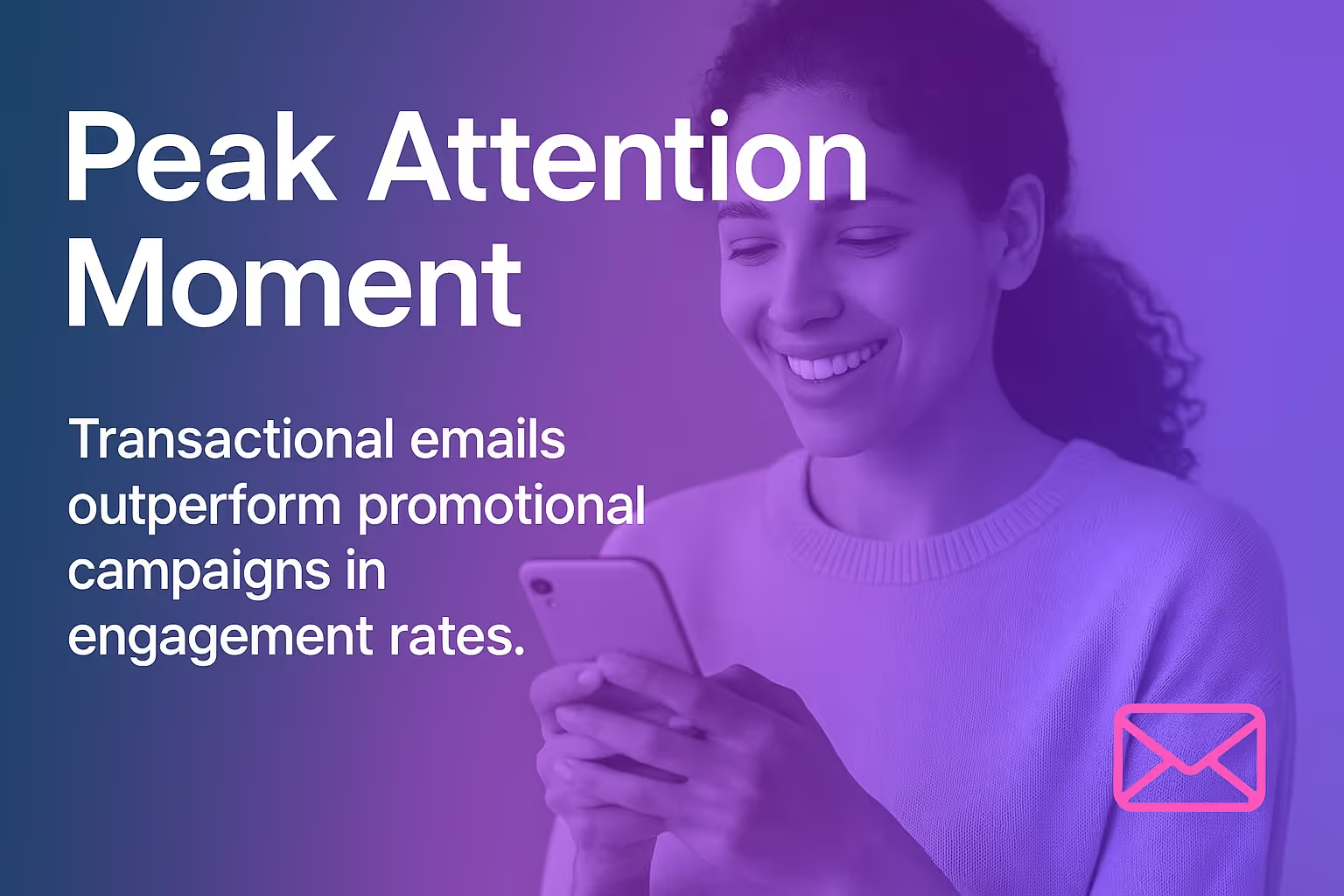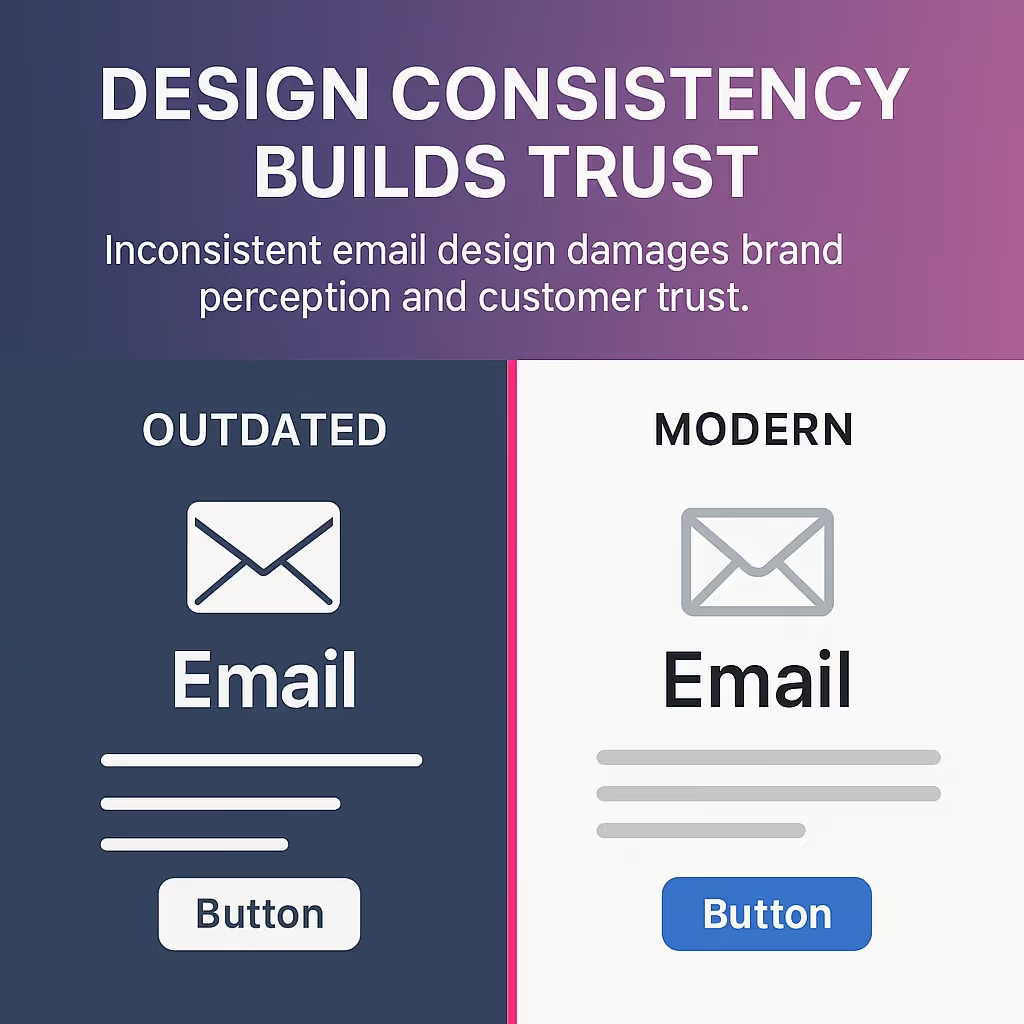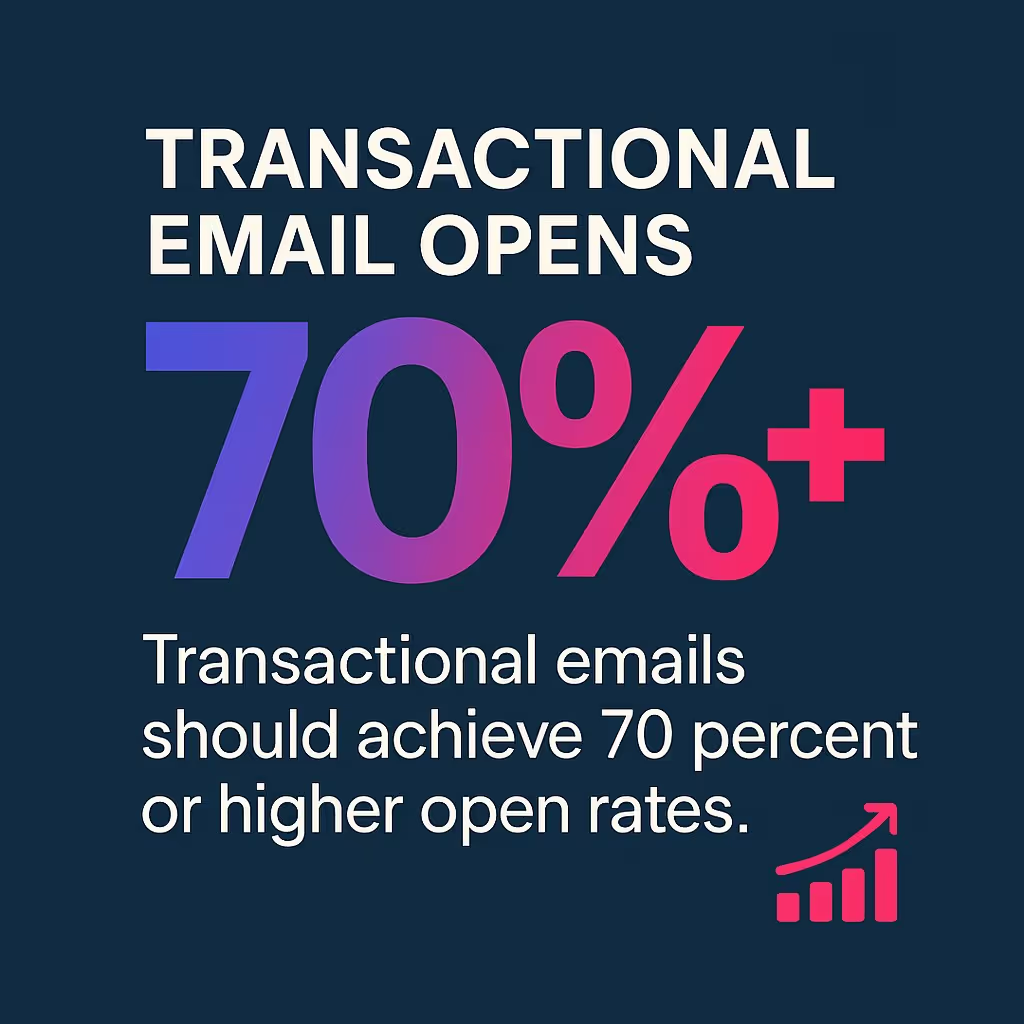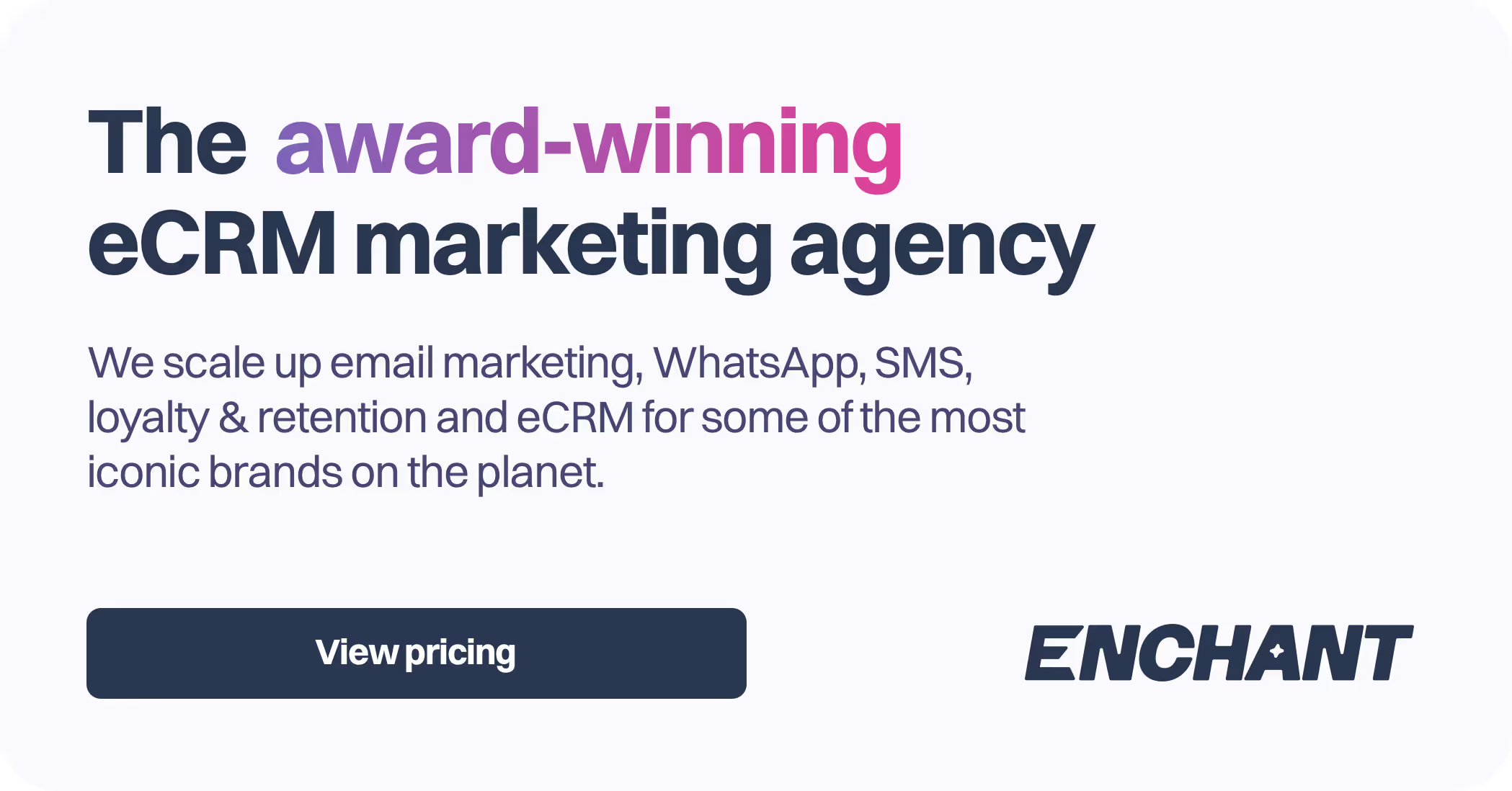Transactional Email Design Trends for 2026
Transactional emails are quietly becoming one of the most valuable touchpoints in your customer journey. While you perfect your promotional campaigns, your order confirmations and password resets reach inboxes at crucial moments when customers are already engaged. The brands winning in 2026 treat these messages as strategic assets, not afterthoughts. They're using identity resolution and predictive AI to transform basic receipts into personalized shopping experiences. This guide walks you through the design shifts that separate functional transactional emails from revenue-driving ones.
You'll discover how retail media networks and identity resolution are transforming transactional emails, enabling real-time personalization down to the product level. We'll cover the visual design patterns gaining traction, the data strategies that power them, and the testing frameworks that refine performance. By the end, you'll have a clear roadmap for upgrading your transactional email strategy before your competitors do.
The Shift from Functional to Strategic Transactional Design
Transactional emails used to serve one purpose: confirm an action. You ordered a product, you got a receipt. You reset a password, you got a link. The design was plain text or barely-styled HTML because nobody thought these messages needed polish.
That thinking cost businesses millions in missed opportunities. Every transactional email reaches a customer at peak attention. They just bought something or requested account access. They will open that message. Engagement rates for transactional emails outperform promotional campaigns by wide margins because the content is expected and relevant.

Smart brands now approach these emails as mini-landing pages. They add visual hierarchy, brand consistency, and strategic upsells without compromising the primary message. Your shipping confirmation still confirms shipping, but it also reinforces your brand identity and suggests complementary products.
Why Design Quality Matters More Than Ever
Customers judge your professionalism based on every interaction. A poorly designed order confirmation signals carelessness. It undermines trust at the exact moment you've earned it through a completed purchase.
Modern consumers expect seamless experiences across all touchpoints. When your marketing emails look polished but your transactional messages look like they were coded in 2010, the disconnect damages your brand perception. Consistency builds confidence.

Design quality also impacts functionality. Well-structured transactional emails render correctly across email clients and devices. They load quickly, display clearly on mobile screens, and use accessible color contrasts. These technical details determine whether customers can actually use the information you're sending them.
The Revenue Impact of Better Transactional Design
Transactional emails drive direct revenue through strategic product recommendations. A customer who just bought running shoes might need running socks. Your order confirmation is the perfect place to surface that suggestion because you already know their intent.
Personalizing email content improves engagement and open rates. When you apply this principle to transactional messages, you're personalizing at the highest-intent moments in the customer journey.
Beyond immediate sales, well-designed transactional emails reduce support costs. Clear order summaries, prominent tracking links, and easy-to-find contact information prevent confusion. Customers find answers without contacting support, saving your team time and improving customer satisfaction.
Visual Design Patterns Defining 2026
Now that you understand why transactional email design matters strategically, let's examine the specific visual patterns that are setting new standards. These aren't experimental concepts. They're proven approaches that balance aesthetic appeal with functional clarity.
Minimalist Layouts with Strategic Focal Points
The trend toward minimalism continues, but with more intentionality. Designers are stripping away unnecessary elements while strengthening the visual hierarchy of what remains. Each email has one clear primary action and one supporting secondary action.
White space is used deliberately to guide the eye. Instead of cramming information into every pixel, successful transactional emails breathe. Important details like order numbers and delivery dates get prominent placement with plenty of surrounding space.
Color is applied sparingly for maximum impact. Call-to-action buttons use your brand's primary color. Status indicators use green for success and red for urgent attention. Everything else stays neutral, creating clear visual priorities without overwhelming the reader.
Mobile-First Responsive Design
Most transactional emails are opened on mobile devices. Customers check order confirmations while still at the checkout counter. They reset passwords from their phones when they can't access their laptops.
Responsive design is no longer optional. Your transactional emails must render perfectly on screens from 320 pixels wide to 1920 pixels wide. This means single-column layouts, large touch-friendly buttons, and readable font sizes without zooming.
Test your templates on actual devices, not just browser-based simulators. Email clients render HTML differently than web browsers. Mailchimp, Brevo, and similar platforms offer preview tools, but nothing replaces testing on real phones and tablets.
Dynamic Content Blocks for Personalization
Dynamic content blocks and behavioral triggers are standard in transactional email strategies, allowing for personalization that increases conversion rates. These blocks adapt based on customer data, showing different products, messaging, or images to different segments.
A first-time buyer sees content welcoming them to your brand. A repeat customer sees appreciation for their loyalty. Someone who abandoned a cart sees recovery messaging. The email structure stays the same, but the content adapts to the relationship.
Implementation requires coordination between your email platform and customer database. Start simple with name personalization and purchase history. Expand to behavioral triggers and predictive recommendations as your data infrastructure matures.
Accessibility as a Design Standard
Accessible design benefits everyone, not just users with disabilities. Clear color contrast makes text readable in bright sunlight. Alt text on images ensures content loads correctly even when images are blocked. Semantic HTML structure enables screen readers to navigate logically.
Check your transactional templates against WCAG 2.1 guidelines. Aim for AA compliance at minimum. This means contrast ratios of at least 4.5:1 for body text, 3:1 for large text, and properly structured heading hierarchies.
Test with screen readers like NVDA or VoiceOver. Listen to how your email sounds when read aloud. If important information is trapped in images without alt text, customers using assistive technology will miss it completely.
Data-Driven Personalization Strategies
With visual foundations in place, the next step is leveraging data to make each transactional email relevant to its specific recipient. This is where design meets strategy. The goal is creating emails that feel personally crafted while being automatically generated at scale.
Identity Resolution and Shopper-Level Targeting
Predictive AI and shopper-level identity allow brands to create intelligent audiences and predict which shoppers are most likely to convert. This moves beyond basic demographic targeting to understanding individual purchase patterns and preferences.

Identity resolution connects customer actions across devices and channels. The person who browsed on mobile, added items on desktop, and completed purchase on tablet is recognized as one customer. Your transactional emails can reference their full journey, not just the final transaction.
This technology enables SKU-level personalization in post-purchase emails. If someone bought a coffee maker, you can recommend specific coffee beans they're statistically likely to enjoy based on similar customers' purchase patterns. The recommendations feel intuitive because they're based on actual behavioral data.
Behavioral Triggers Beyond the Basics
Automated email sequences deliver timely, relevant content based on user behavior and lifecycle stage. Advanced behavioral triggers move beyond "you bought this" to "based on when and how you bought this, here's what happens next."
Consider timing-based triggers. A customer who typically reorders every 30 days gets a reminder email on day 28. Someone who bought seasonal items gets advance notice when new seasonal products arrive. The transactional email becomes the start of an automated relationship, not a one-off message.
Track engagement with your transactional emails themselves. If someone consistently clicks product recommendations in order confirmations, increase the prominence of those sections in future emails. If they never engage with upsells, minimize that content and focus on delivery information.
Machine Learning for Predictive Recommendations
Advanced analytics and machine learning predict customer behaviors and preferences, enabling tailored marketing strategies and optimized experiences. In transactional emails, this means showing products customers are likely to want before they search for them.
Machine learning models analyze purchase history, browsing behavior, and demographic data to generate recommendation scores. The products with highest scores appear in your transactional emails. As the model learns from clickthrough and purchase data, recommendations improve over time.
Start with simple algorithms like "frequently bought together" or "customers who bought this also bought." These require less technical infrastructure than full machine learning implementations. Measure which recommendation types drive the most revenue, then invest in more sophisticated models for your best-performing categories.
Personalization LevelData RequiredImplementation ComplexityRevenue ImpactName and basic detailsCustomer profile dataLowEstablishes baseline trustPurchase historyTransaction databaseMediumEnables relevant upsellsBehavioral triggersEvent tracking systemMedium-HighIncreases engagement ratesPredictive AI recommendationsML infrastructure + historical dataHighMaximizes revenue per email
Testing and Optimization Frameworks
You've built a solid design foundation and implemented personalization. Now comes the continuous improvement phase. The most successful transactional email programs treat optimization as an ongoing process, not a one-time project.
A/B Testing Within Automated Workflows
A/B testing within automated workflows refines strategies continuously, experimenting with different subject lines, content layouts, or call-to-action buttons to optimize email performance. This systematic approach reveals what actually works with your specific audience.
Start with high-impact elements. Test subject lines first because they determine whether emails get opened. Try personalized versus generic subject lines. Test urgency-driven versus informational approaches. Run each test until you reach statistical significance, typically requiring thousands of opens.
Move to layout testing once you've optimized subject lines. Compare single-column versus two-column layouts. Test image placement, button sizes, and content order. Change one element at a time so you know exactly what caused performance differences.
Timing Optimization for Maximum Engagement
Timing optimization matters, with some studies suggesting emails sent on Tuesdays and Thursdays may have higher open rates, but optimal timing varies by audience and should be tested. Your customers might behave differently than general benchmarks.
For transactional emails, timing is often dictated by the triggering action. Order confirmations send immediately after purchase. Shipping notifications send when items leave the warehouse. But you have flexibility with follow-up transactional messages like review requests or replenishment reminders.
Test send times for these flexible messages. Try morning versus evening sends. Compare weekday versus weekend delivery. Track not just open rates but conversion rates and revenue per email. The goal is finding when your audience is most likely to take action, not just open.
Metric Tracking and Performance Benchmarks
Engagement metrics such as open rates, click-through rates, and conversions are essential for measuring the effectiveness of email content and understanding audience response. Set up tracking for every transactional email type in your program.
Monitor these key metrics by email type:
- Open rate (should be 70%+ for transactional emails)
- Click-through rate on primary CTA (track separately from secondary links)
- Conversion rate for recommended products
- Revenue per email sent
- Customer service ticket reduction after design improvements

Compare your performance against your own baseline, not industry averages. Your goal is continuous improvement, not matching someone else's numbers. Track trends over time. Are your optimization efforts actually moving the metrics that matter?
MetricWhat It MeasuresHow to Improve ItOpen RateSubject line effectiveness and sender trustTest subject line personalization and clarityClick-Through RateContent relevance and CTA prominenceImprove visual hierarchy and personalizationConversion RateRecommendation quality and design effectivenessRefine product algorithms and simplify checkoutRevenue Per EmailOverall program effectivenessOptimize all previous metrics together
Implementation Roadmap for Your Business
You now have a complete picture of where transactional email design is headed and why it matters. The final step is translating these insights into action at your organization. This roadmap breaks the work into manageable phases.
Phase 1: Audit Your Current State
Start by cataloging every transactional email your business sends. Order confirmations, shipping notifications, password resets, account creation messages, and subscription confirmations all count. Document the design, personalization level, and performance metrics for each.
Test these emails across devices and email clients. Gmail, Outlook, Apple Mail, and Yahoo Mail render HTML differently. Use tools like Email on Acid or Litmus to preview how your emails look everywhere they might be read.
Identify your biggest opportunities. Which transactional emails have the highest send volume? Which have the worst design quality? Which reach customers at the most valuable moments? Prioritize improving the emails that combine high volume with high strategic importance.
Phase 2: Establish Your Design System
Create a transactional email design system that maintains brand consistency while allowing flexibility. Define your color palette, typography, button styles, layout grid, and spacing standards. Document these decisions so anyone on your team can create on-brand transactional emails.
Build modular templates that work across email types. Your header, footer, and basic layout should be reusable components. The content section in the middle adapts to each message type, but the surrounding framework stays consistent.
Work with your development team to ensure templates are maintainable. Use a templating system like MJML or your email platform's native builder. Avoid hand-coding HTML for every email type. That approach doesn't scale and makes updates painful.
Phase 3: Implement Personalization Infrastructure
Connect your email platform to your customer database and product catalog. This technical integration enables the personalization strategies discussed earlier. You need real-time access to customer data, purchase history, and product information.
Start with basic personalization like names and recent purchases. Test that data flows correctly before building complex recommendation engines. Many personalization failures happen because the underlying data integration is broken or incomplete.
Add behavioral triggers incrementally. Implement one trigger type, monitor its performance for a few weeks, then add the next. This measured approach prevents overwhelming your team and makes it easier to identify problems when they occur.
Phase 4: Test, Measure, and Iterate
Set up your testing calendar for the next quarter. Plan which elements you'll test and in what order. Subject lines, layouts, personalization approaches, and timing all deserve systematic testing. Don't try to test everything simultaneously.
Create a dashboard that tracks your key metrics. Google Analytics, your email platform's native analytics, and your ecommerce platform should all feed data into one view. This consolidated reporting makes it easier to spot trends and measure ROI.
Schedule monthly reviews of your transactional email performance. Look at what's working, what's not, and what you'll test next. Involve stakeholders from marketing, customer service, and product teams. Transactional emails touch multiple parts of your business, so optimization should be a collaborative effort.
Successful transactional email programs evolve constantly. The design patterns, personalization techniques, and testing strategies that work in 2026 will need refinement in 2027. Build a culture of continuous improvement rather than treating this as a project with a finish line.

Moving Your Transactional Emails Forward
Transactional emails represent your most reliable customer touchpoint. Every message reaches someone who just took an action with your business. They're paying attention in ways they don't with promotional emails.
The brands that win in 2026 recognize this opportunity and invest accordingly. They apply the same design rigor to order confirmations that they apply to marketing campaigns. They use customer data to make every message relevant. They test systematically to improve results over time.
Your roadmap is clear: audit your current emails, establish a design system, implement personalization infrastructure, and optimize continuously. Start with your highest-volume transactional emails. Improve those first, then expand to the rest of your program.
The best part about upgrading your transactional email strategy is that customers welcome the improvement. You're not asking for more attention or interrupting their day. You're making necessary communications more useful, more attractive, and more relevant. That's a change everyone benefits from.




.svg)
.avif)












